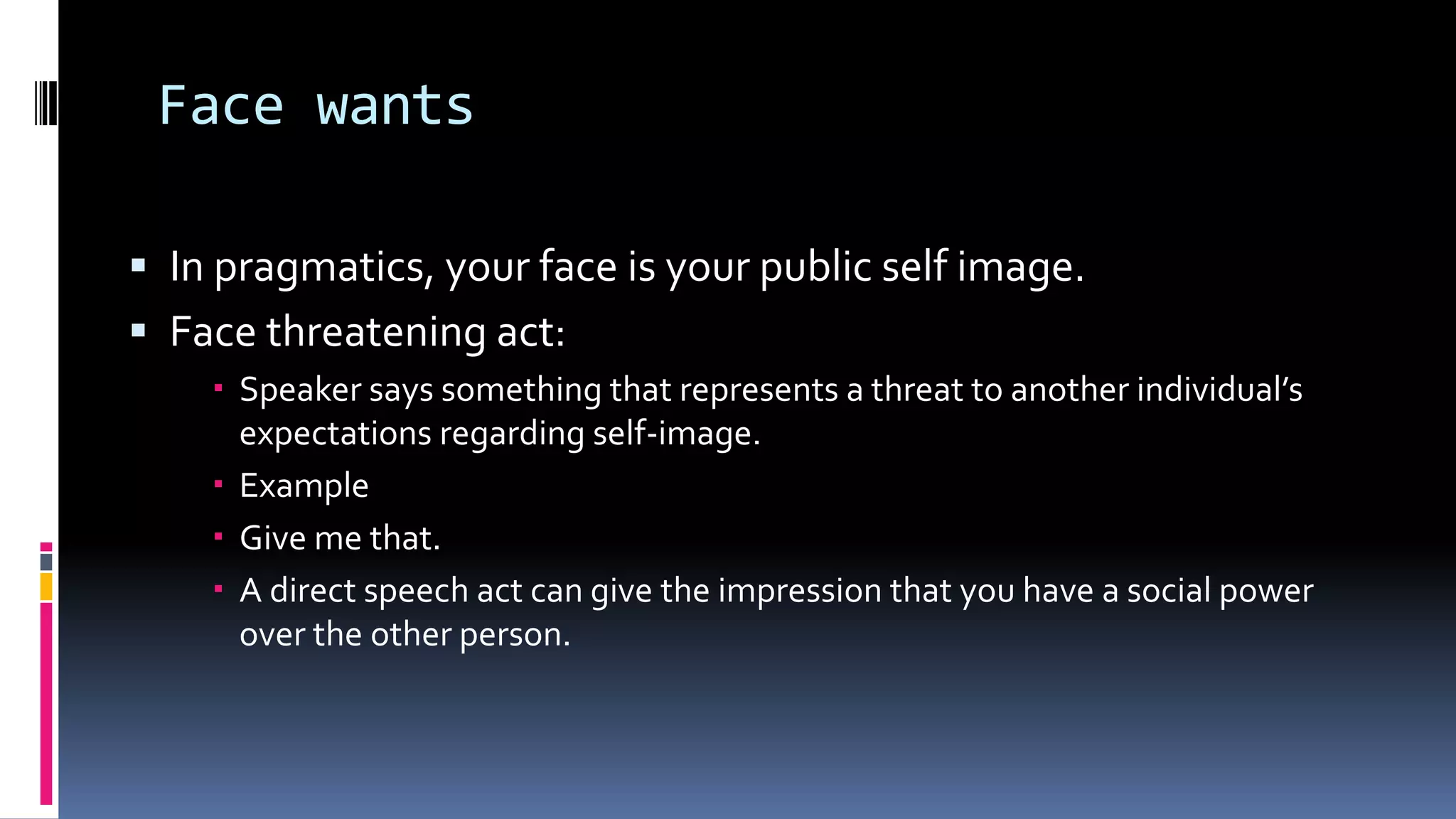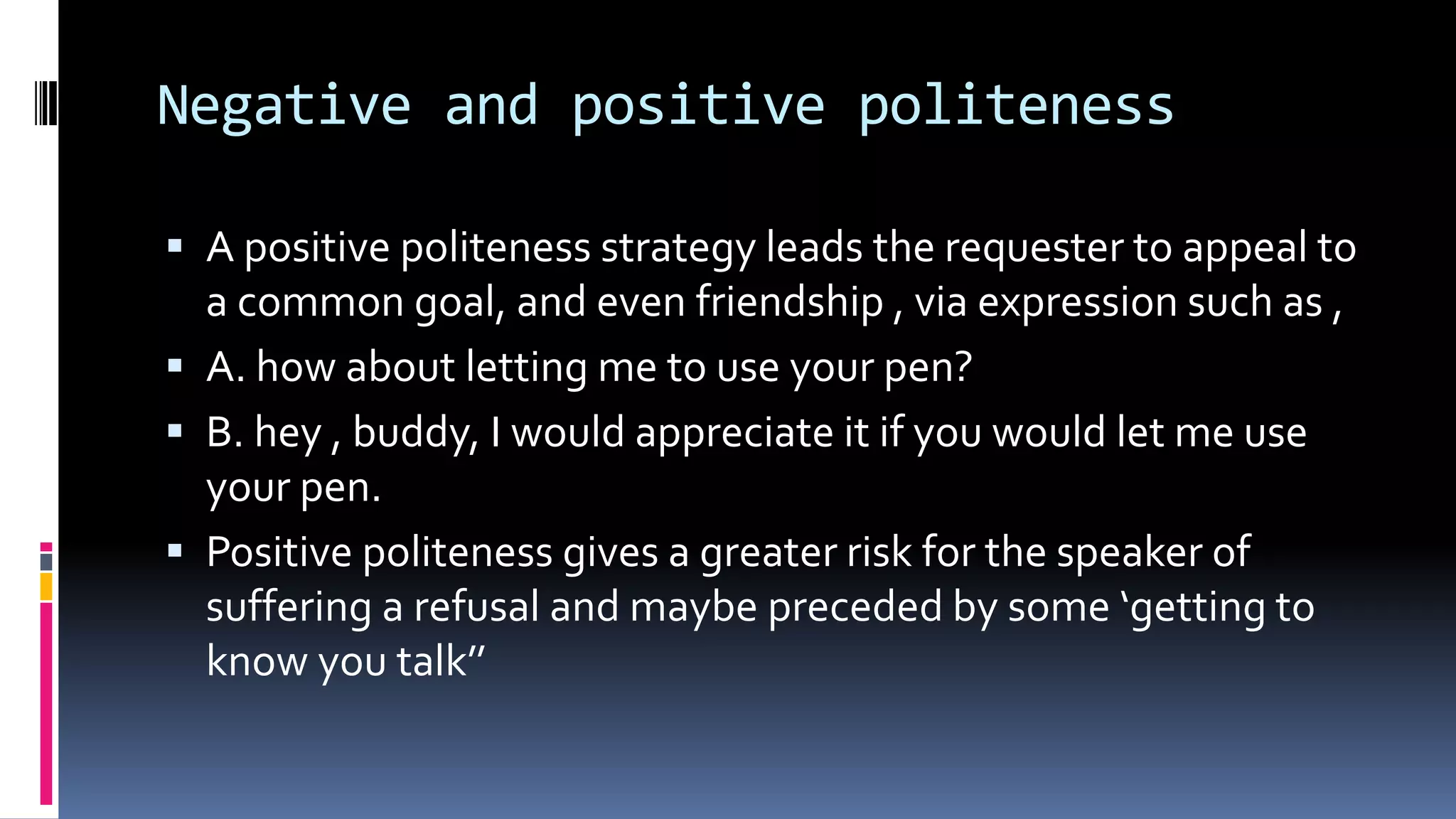This document discusses politeness and interaction in pragmatics. It explains that linguistic interactions are social interactions influenced by external and internal factors. Politeness can be defined as means to show awareness of another's public self-image or "face." Face-threatening acts risk damaging someone's self-image while face-saving acts aim to maintain it. Positive face relates to inclusion while negative face relates to independence. Speakers can make implied or direct requests on or off the record. Pre-sequences are used before requests, invitations, and announcements to assess receptiveness.















